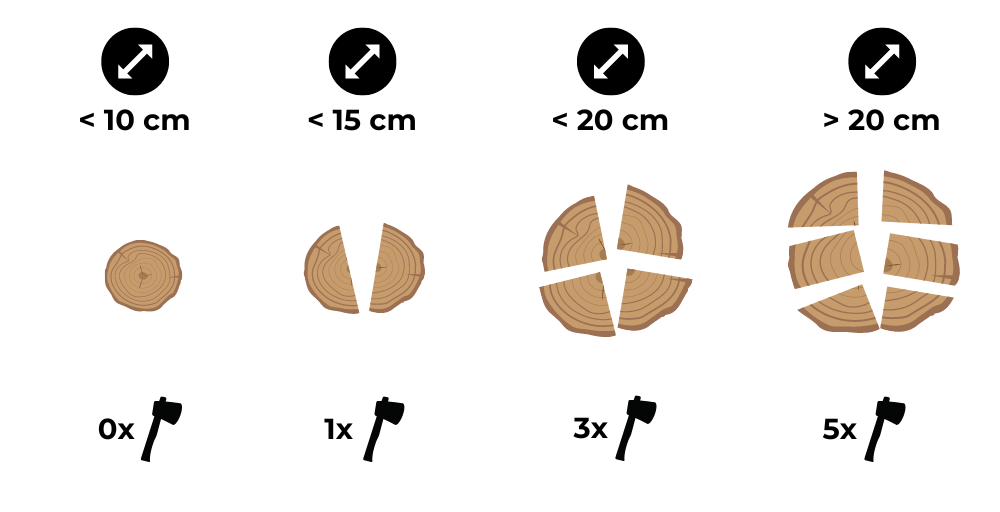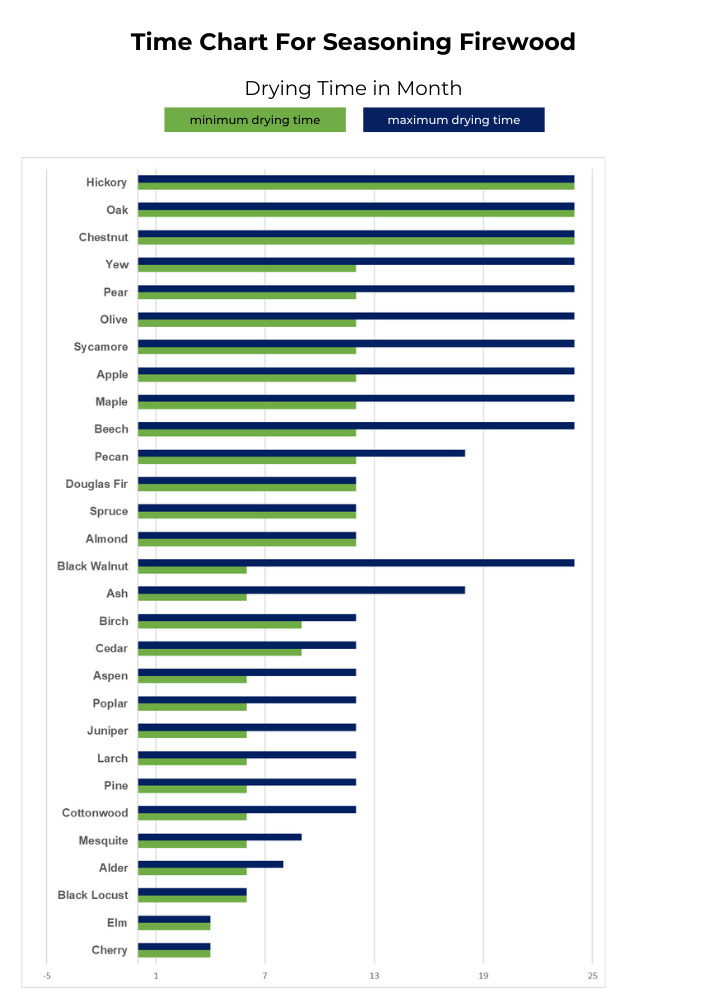Especially in the times when oil and gas is expensive, owners of fireplaces are happy to heat their homes with wood. But not only for the purpose of heat, firewood is also for the atmosphere or used in the evenings BBQ.
The firewood does not have to be purchased expensively – the processing of your own firewood is very simple. This guide outlines the most important points to consider when processing wood. From the appropriate time through storage to safety.
Is there a wrong way to cut firewood?
Cutting wood is not just cutting wood. The actual process of chopping wood is, of course, in everyone’s head, and at first not further difficult to realize.
Nevertheless, there are some details that distinguish the amateur from the professional.
The key word here is efficiency. The right timing, the correct drying time and the right size of the logs maximize the output.
The perfect shape and dimensions for firewood
Let’s assume you have a chopped tree lying in front of you, just waiting to be turned into firewood.
- Lenght
The length of the logs depends first on individual factors, which you can easily check at home.
Logs for the fireplace in the house should be no more than long enough to have 5 cm space to each side when burning in the stove, so as not to damage the oven walls unnecessarily.
Also the storage place of the logs has to be designed accordingly for the length, so that they will remain sheltered.
When sawing, measure a log only once, and then always place it next to the log as a reference value in order to produce pieces of equal size.
A good guideline, which is valid for almost all common fireplaces, is 30cm.
- Shape and diameter
The heating intensity of the individual log depends not least on its shape, since greater heat can be emitted from a larger surface. The logs should still be practical to handle and easy to stack.
How often a log is to be split crosswise after sawing depends on the diameter of the log. If the diameter is less than 10 cm, the logs can be burned in one piece. Up to 15 cm, the log should be split with an axe crosswise once, and up to 20 cm, it is recommended to quarter the pieces. Logs with a larger diameter than 20 centimeters should be chopped into at least 6 pieces to make the best use of the surface and produce manageable firewood. The following graphic shows, how firewood should be split according to the diameter:

When is the best time to cut firewood?
“The best time to cut firewood is late winter or early spring.“
This allows the maximum possible seasoning time for drying in the same year.
Also, the tree has not yet begun to soak it’s trunk full of water to provide nutrients for the leaves. It is therefore already naturally drier.
There are a variety of fast-drying woods that are thus ready to be burned in the same year.
How long needs firewood to dry completely?
For the home fireplace or the fire pit in the garden, there are a variety of wood types that are suitable for heating. Basically, a distinction is made between hardwood and softwood. The biggest differences lie in the density and the associated ability to emit energy (in other words, heat) for a longer period of time.
Hardwood, such as oak or maple, have a very long burning time, but also need a longer time to dry, usually at least a year.
Softwood, such as pine, are ready to burn after shorter times, but lose substance more quickly and provide heat over a shorter time period.
If you have the possibility, it is recommended to have a good mix of different types of wood in stock, so that dry wood is always available. This can be achieved by purchasing or cutting firewood yourself during certain periods.
As a guideline, I have summarized the drying times or seasoning times of various types of wood in the following table. Depending on the moisture content of the wood and the circumstances of storage, approximate values for minimum and maximum storage time of the firewood are given.

(Source: M. Culligan, 2022)
What safety equipment is needed for cutting firewood?
Safety always comes first.
If you are processing firewood at home, self-protection is indispensable. Even if this circumstance is obvious, I would like to grant it a place here, because I have witnessed a few accidents in my personal circle of friends while working with wood.
The necessity of safety measures depends largely on the tools used.
If you have prefabricated logs at home and only cut them with an axe, the requirement for protective equipment is not as high as when you process whole logs with a chainsaw.
Must-haves
- Sturdy Footwear
Wood also has a weight. And not just a little. If a log falls on your foot and you’re wearing sneakers, you’ll wish you’d bought the wood ready-cut. No steel-toed shoes are necessary, but recommend sturdy, secure boots, which can be found anywhere in stores for as little as $50-100.
- Gloves
To grip and carry the rough logs and chopped pieces, the use of gloves is essential to avoid getting splinters in your hand.
Recommended
- Eye Protection
When sawing with chainsaws and chopping with axes, small pieces may break off from the wood and fly around at high speed. Good polycarbonate eye protection is strongly recommended. The products can be found in hardware stores, I myself use these glasses from Amazon.
- Cut Protection Pants
When working with a chainsaw, the legs are especially at risk. Special cut protection pants ensure that as soon as the chainsaw comes into contact with the material, chain gets caught in the webbing and the chainsaw comes to a stop. The pants are light and at the same time warming and can easily be worn over normal clothing. In doing so, they not only protect against injuries, but also against dirt.


